Gemstones: classification, name and photo
Ornaments are not just an accessory, but also a profitable investment, but only if it is jewelry made of precious metals with natural stones. It is said that not only are precious diamonds, and a range of natural stones is huge, but it is important to know how to evaluate their quality, do not fall for the fake, and, most importantly, the value of the stones is determined by what parameters.
What gems
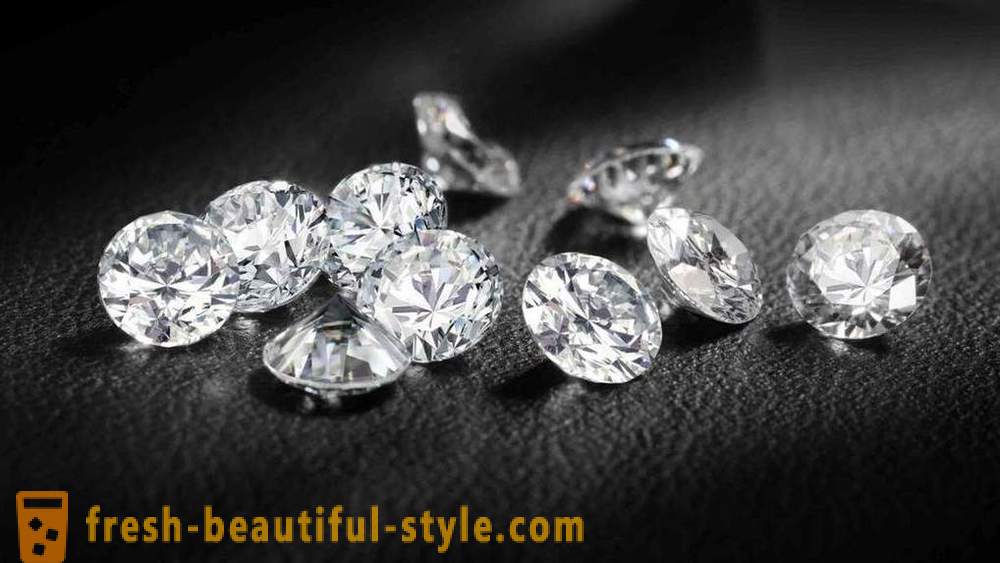
Precious considered natural minerals, mainly crystalline nature that have no color at all, or have a nice, uniform color moderate tone, transparency and hardness, gloss, play on light and admirable. Natural gem should be resistant to abrasion and fading, as well as external chemical attack.
Natural stones are used to make jewelry and other art products, and their price is largely determined by the prevalence of the gem in the wild.
There are several classifications of the opposite gemstones, the most common of which is the jewelry and the total (taking into account the cost of semi-precious stones).
Jewelry classification
Master jeweler's divide all the stones on natural and synthetic. Artificial gems no material value does not have, and that's natural can be organic or mineral origin, and are divided into several categories.
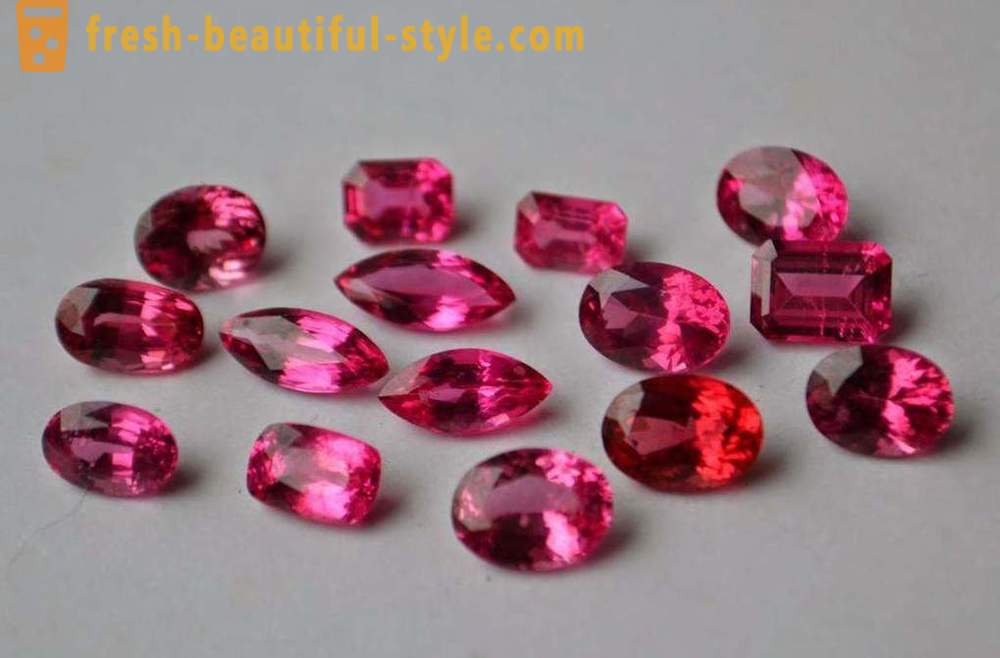
In the jewelry and trading practices used by all natural stones are divided into:
- precious;
- semiprecious stones;
- ornamental.
Among the gems are rock mineral origin, with high hardness and transparency - diamonds, emeralds, sapphires, rubies, and pearls are natural organic.
The size of the crystal and its value determined by the weight, measured in carats. Diamond is the hardest and expensive precious stone which is produced by the cut diamond. The cost of diamond, besides the size, is defined as its color and clarity (presence of natural defects).
Precious stones, names and photos can be found in the article can be selected both in appearance and quality characteristics, horoscope, and other individual parameters.
Emerald is fragile and poorly transparent stone, which is valuable in the first place, its unusual green color of fresh grass.
Rubin - one of the types of mineral corundum stone, has bright and saturated red.
Sapphire is also a member of the corundum group, has high transparency, and shades oscillate between dark blue and pale blue. In nature, sapphires are rare. However, their cost is lower than that of rubies.
Pearl - a gem of organic origin, formed in the shells of sea and river mollusks. Color pearls - from white to black. The larger grain pearls, the higher its cost.
Semi-precious stones can also be transparent or colored, and among them the most popular are:
- turquoise;
- grenades;
- topaz;
- amethyst;
- tourmaline;
- zircon;
- Opal;
- quartz;
- spinel.
Precious stones - little transparent or opaque minerals generally low hardness. At the same time, these stones differ beautiful natural pattern and color, so it is widely used in jewelry.
The most common ornamental stones are:
- carnelian;
- agate;
- Onyx;
- cat's eye;
- jasper;
- malachite.
The general classification of
The abundance of gems classifications due to the fact that the specialists of different spheres emit different qualitative characteristics of gems required in their business and divide the stones into types according to these characteristics. There are classifications based on:
- chemical composition of the crystals;
- origin of the stones;
- size;
- colors;
- crystallographic parameters;
- methods of treatment;
- value;
- the therapeutic properties;
- destination.
The first classification is justified by science, showing what precious stones, was formed in 1860 by the German scientist Kluge, separating gems not only of precious and semiprecious stones, but also into different classes according to their physical characteristics. Subsequently, increased knowledge about stones and classification supplemented.
The most simple and accurate is considered to be the division of rocks into groups according to their purpose:
- Jewelry;
- gemstones;
- ornamental.
To date, the most comprehensive and widespread is the classification of gems scientist Kievlenko, which takes into account both the purpose and value of gemstones.
According to this classification, gemstones are divided into groups and these groups in order:
jewelry stones
- 1st order: diamond, ruby, emerald, blue sapphires.
- 2nd order: alexandrite orange, purple and green sapphires, black opal, jadeite.
- 3rd order: spinel, fire and white opals, topaz, aquamarine, tourmaline, rhodolite.
- 4th order beryl, zircon, beryl, turquoise, amethyst, citrine.
Jewelery, precious stones
- 1st order: lapis lazuli, jade, malachite, charroit, amber, rock crystal.
- 2nd order: agate, hematite, obsidian.
Precious stones
- jasper;
- Onyx;
- pegmatite;
- quartzite.
The colors of precious stones
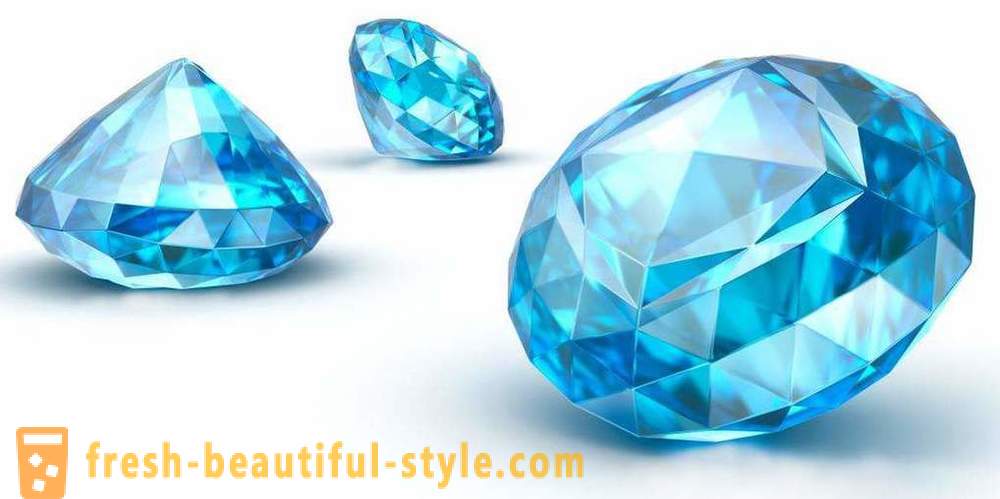
Most gems have the same or similar symptoms, so among the transparent stones are groups of different minerals of the same color, so the only shade to determine the nature of the stone is not always possible and requires additional expertise to the definition of the crystallographic parameters. Blue precious stone high transparency can be like topaz and sapphire. The cost of these stones is very different, but the ordinary man in the street with no experience in gemology difference may not be noticeable. Nevertheless, it is the color of stones is their main distinguishing feature.
The color of the stones are:
white
- Transparency: diamond, rhinestone, zircon.
- Opacity: pearls, coral, amber.
Red
- Transparency: fire opal, ruby, spinel.
- Opacity: coral.
Yellow
- Transparency: Hessonite, zircon, citrine
- opacity: amber, jade, cat eye.
Purple
- Transparency: amethyst, spinel.
- Opacity: charroit.
Pink
- Transparent quartz, tourmaline, spinel.
- Opacity: pearls, coral, rhodonite.
Green
- Transparency: emerald, tourmaline
- Opacity: jade, malachite, jade, onyx.
The blue and blue:
- Transparency: aquamarine, topaz, tanzanite, zircon, sapphire, spinel.
- opacity: turquoise, lapis lazuli.
Black opaque: pearls, hematite, obsidian.
Any color is in fact composed of seven rainbow pure colors that are different wavelengths. Visible color depends on the degree of reflection and absorption of the color spectrum. Thus, the stone passed through the whole range of colors, it seems clear, if the stone absorbs the entire visible color spectrum - it's black. When the stone reflects only one color, such as blue, red or green, the only color that is visible to the human eye, and the other colors are absorbed.
To fully evaluate the color of the stone can only be in bright light, and artificial and sunlight stone may look different.
Transparency
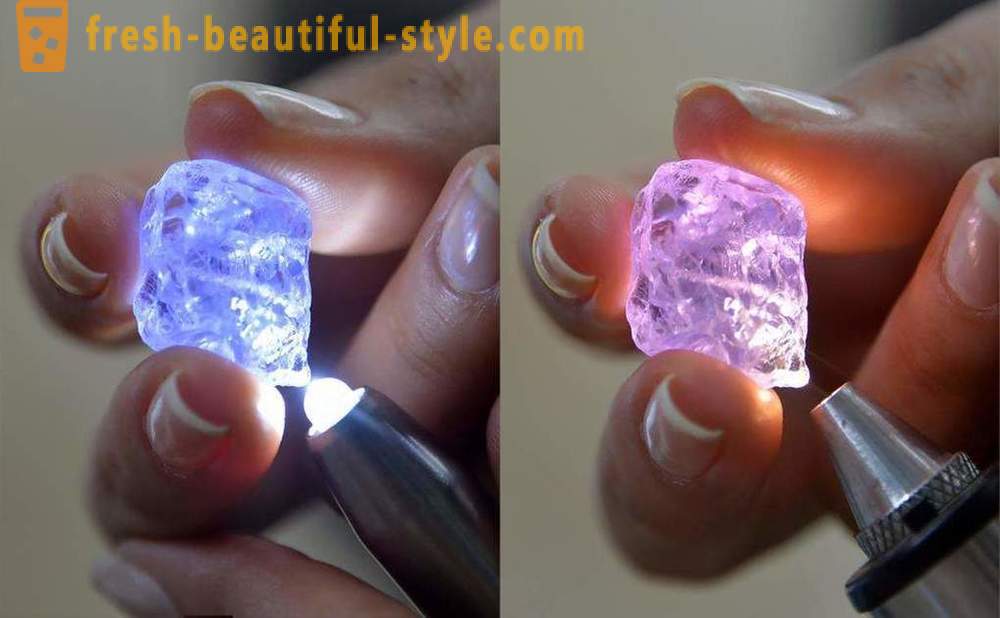
Transparency - an important feature, especially when it comes to precious stones. In this case, a transparent mineral meant the ability to pass through it the rays of light. Also affects the transparency of the crystal structure, the presence therein of cracks and defects, various inclusions. Inclusion, especially larger than the length of the light wave, distort light passing through the stone, and the stone becomes opaque with multiple inclusions. precious stones transparency evaluated both visually and by using a special device - spectrophotometer.
By the level of transparency of jewelry stones are divided into:
- fully transparent (colorless or lightly colored, through the facets of which objects can be clearly seen).
- translucent (colorless and colored stones, through which objects can be seen blurred);
- translucent in thin layers (stones, the light in which only penetrates the outer layer, but not through, the objects are not visible);
- completely opaque.
Luster
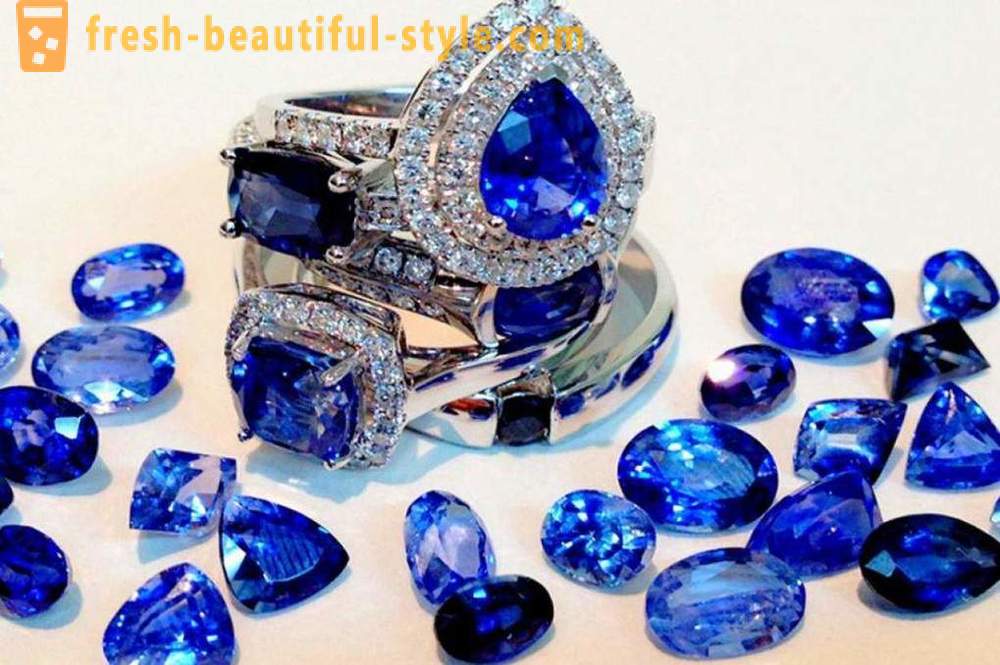
Jewels, whose names mostly come from the names of minerals, among other characteristics are classified based on their brightness.
Gloss stone surface is the ability to refract and reflect light.
Depending on the nature shine stones are divided into:
- diamond (diamond, zircon), in which the light is strongly reflected from the surface.
- Glass (corundum, topaz, tourmaline) - glass-like shine.
- Wax (turquoise, jasper, coral), matte finish with a slight sheen.
- Metal (hematite, pyrite), a strong reflection light from the surface of opaque stones.
- resinous (amber).
- Pearl (Pearl) shine and play in several colors.
Hardness
Precious stones for a woman - it's jewelry, but often important not only their beauty, but practical, depending on the quality of the mineral characteristics. The hardness of the stones measured on the Mohs scale. As a standard scale used for the 10 different minerals own hardness which compares all other stones. Evaluated on a scale indicator.
In gemstones can be formed scratches inflicted minerals with a high hardness on the Mohs scale. It is considered the hardest gem diamond.
Processing
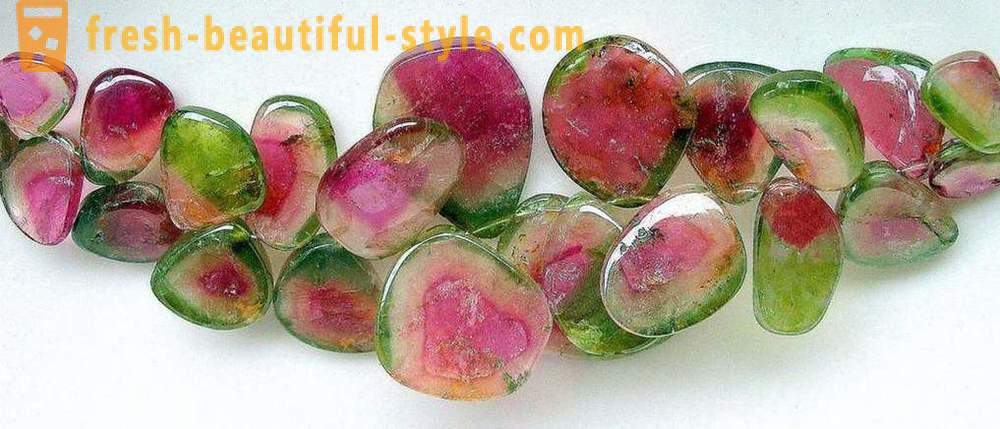
The original mineral looks absolutely unattractive, and only a master in the usual sliver can see the beauty of the gemstone.
Without exception, all gems are processed in two ways:
- tumbling;
- cut.
type of processing is selected according to the type, hardness and size of the mineral, and its purity and optical characteristics.
Method of tumbling stones converted into cabochons. Tumbling is considered the oldest type of gemstone processing. Such a processing method suitable for translucent and opaque minerals: turquoise, cat's-eye, onyx, charoite, malachite.
The result of surface finishing (grinding and careful polishing mineral) is streamlined smooth stone without faces, often with a flat base to which it is fixed in a frame made of metal.
Cabochons can be not only of different size, but differ in height and shape (flat, convex, concave).
Transparent minerals: sapphire, emerald, topaz, ruby and of course diamond is treated by the method of cut, giving them a geometric or fancy shape with a lot of faces, providing a play of light.
facets Range
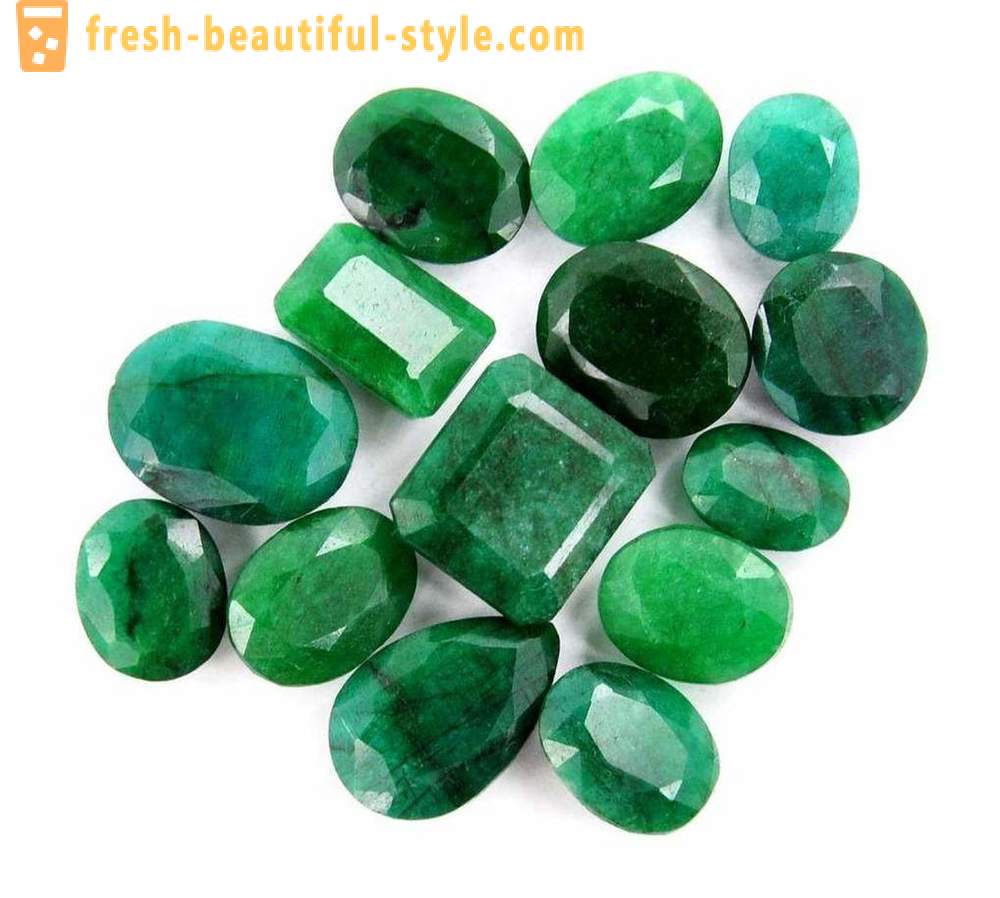
The most common faceting gemstones in jewelry are:
- Circle;
- oval;
- pear;
- Marquis;
- baguette;
- square;
- octagon;
- trillion;
- heart;
- polyhedron.
The circle is the most common form of the cut, as it allows to obtain balanced inserts, light transmitting fine. Standard round brilliant cut diamond is from 57 facets on the stone.
Oval often are cut large minerals, processing them wedge-shaped faces. This cut became popular only in the 60s of the last century.
Despite the title cut pear, stone, treated in this way resemble drops, in which the upper floor is smooth, and the play of light is provided by the lateral wedge faces. Marquis called facet in grain shape, with sharp corners. With this method, the stone length is half of its width, and it can serve not only for the insert rings, but also for earrings and pendants.
Baguette - kind of step-cut rectangular shape. In this treatment, become visible not only advantages, but also disadvantages of stone, and the quality of the mineral is particularly important.
Square - Polishing speed equal length and width. The stones used in such jewelry form, both as central inserts, and for the framing.
Octagon - cut stone in the form of an octahedron, it is often referred to as the emerald. This form is suitable even for brittle minerals by preventing damage and chips, but it perfectly demonstrates their purity and color.
Trillion - cut in the shape of a triangle. The number of faces in the gem stone depends on the features and design of the future decoration.
Heart - one of the most complex and expensive facets, often used for exclusive jewelery. cut quality is determined evenness of the finished stone path.
Polyhedron - the type of cut, in which the mineral formed into five, six, eight sides. This treatment is often used for semi-precious stones, ornaments inserted in the volume.
The best way to imagine what it looks like one or the other at different cut gem is photo viewing precious stones.
Weight stones
The main factor determining the value of a precious stone, besides the cleanliness, cut, and color is its weight.
Metric system used since the beginning of the twentieth century and up to our time, which is determined by the weight of the stones is carat.
Carat - the unit of mass equal to 0, 2 grams, is used throughout the world to determine the mass of gemstones and pearls.
Determine the weight of stones with the help of special electronic scales, taking into account not only the whole number, but also the hundredth, or even thousandths of a carat. Weight pearls determined according carat system in the faces in one grain contains 4 karate.
The larger the gem, the higher the cost per carat, since larger stones are more rare, especially diamonds.













































